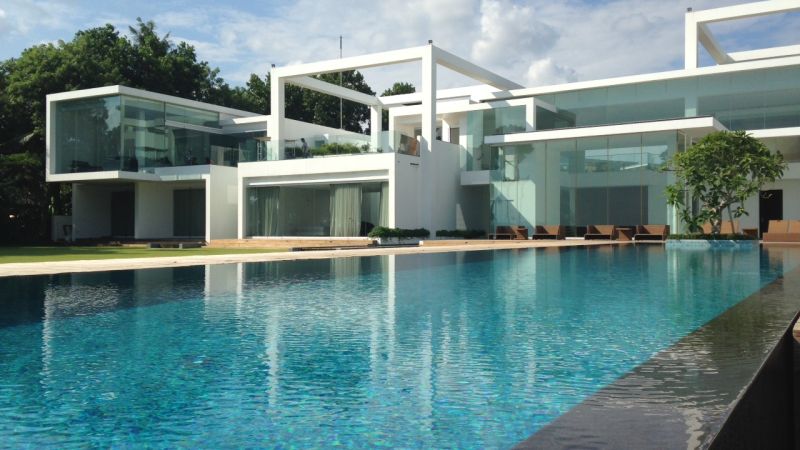'Modernist Paradised Realised'
Each building in the compound has its own personality, attesting to the owners deft combination of Eastern and Western influences. The pool house is identified by its joglo roof, a vernacular design popular with aristocratic classes on the neighboring island of Java. Its distinctive peak provides shady shelter even over a portion of the pool. And the guesthouse’s solid concrete walls and expanses of glass reference the pavilion Mies van der Rohe designed for the 1929 International Exposition in Barcelona. The edifice seems almost like an island, with the adjacent pool emptying into the man-made ponds surrounding it.
The surrounding spatiality of rice fields, with a river and a picturesque water temple nearby greatly informed the residential design and its subsequent landscape design that saunters and rests around the house. Instead of one building, the house is split up into unique forms upon the now lush site to face a central courtyard and a pool, culminating as the heart of the property. The angular main house clad in dark shingles juts out like a tent, with spaces designed for main family and guest, while the unfussy, white guesthouse features a more pared-back, concrete architecture with glass walls. The austere pool pavilion features a distinct, tall roof reminiscent of Javanese Joglo vernacular structures. All forms, distinct on their own, manage to come together in a stylish chorus, of eclectic yet sombre décor, sewn with a materiality of solid steel, teak, and marble.
The owner made use of the time during construction to focus on expanding his collection of home accessories, everything from lighting to furniture to cutlery, while creating nearly 100 custom pieces for the Bali abode. The whole design language started as the most basic geometries: square, triangle and circle.

